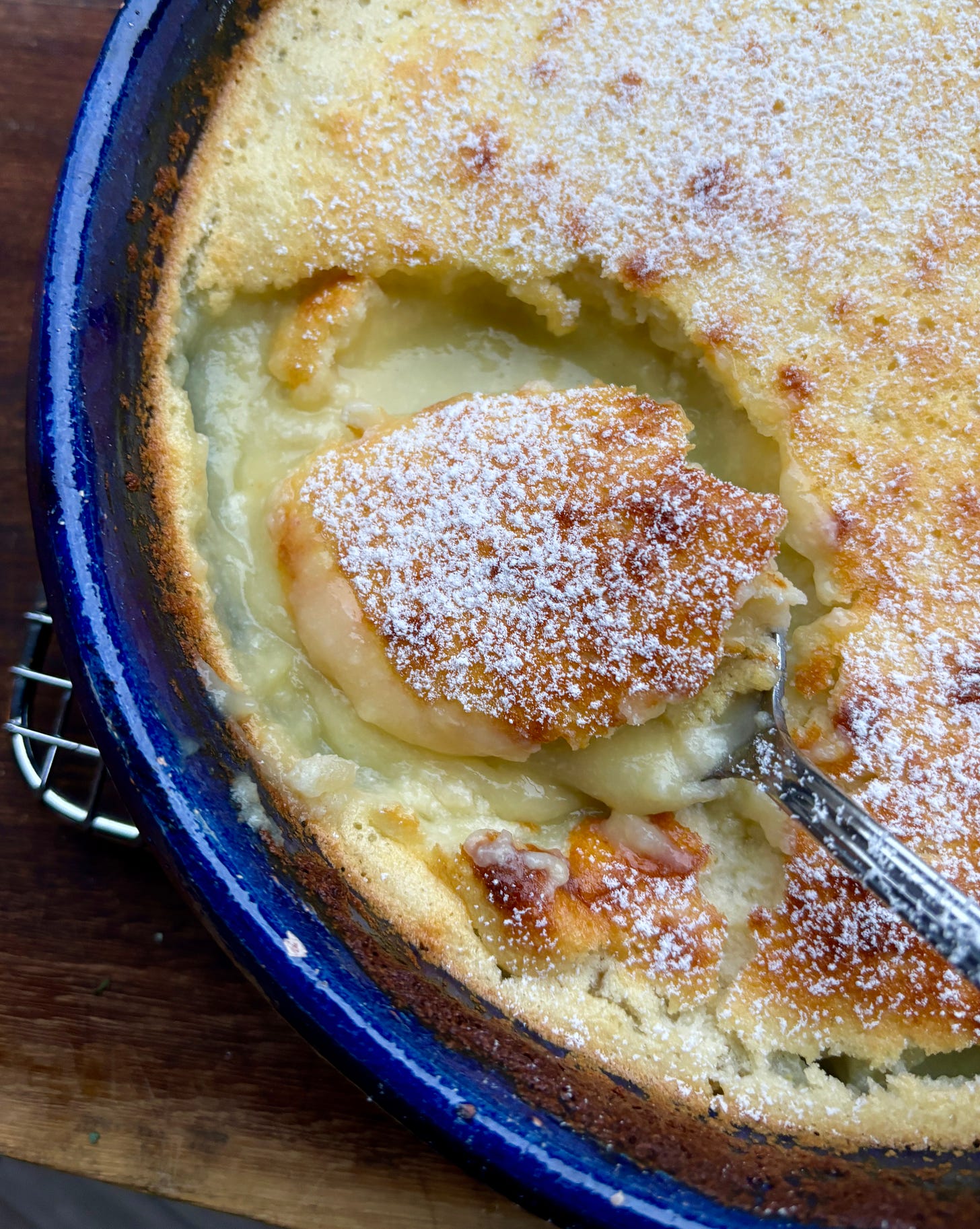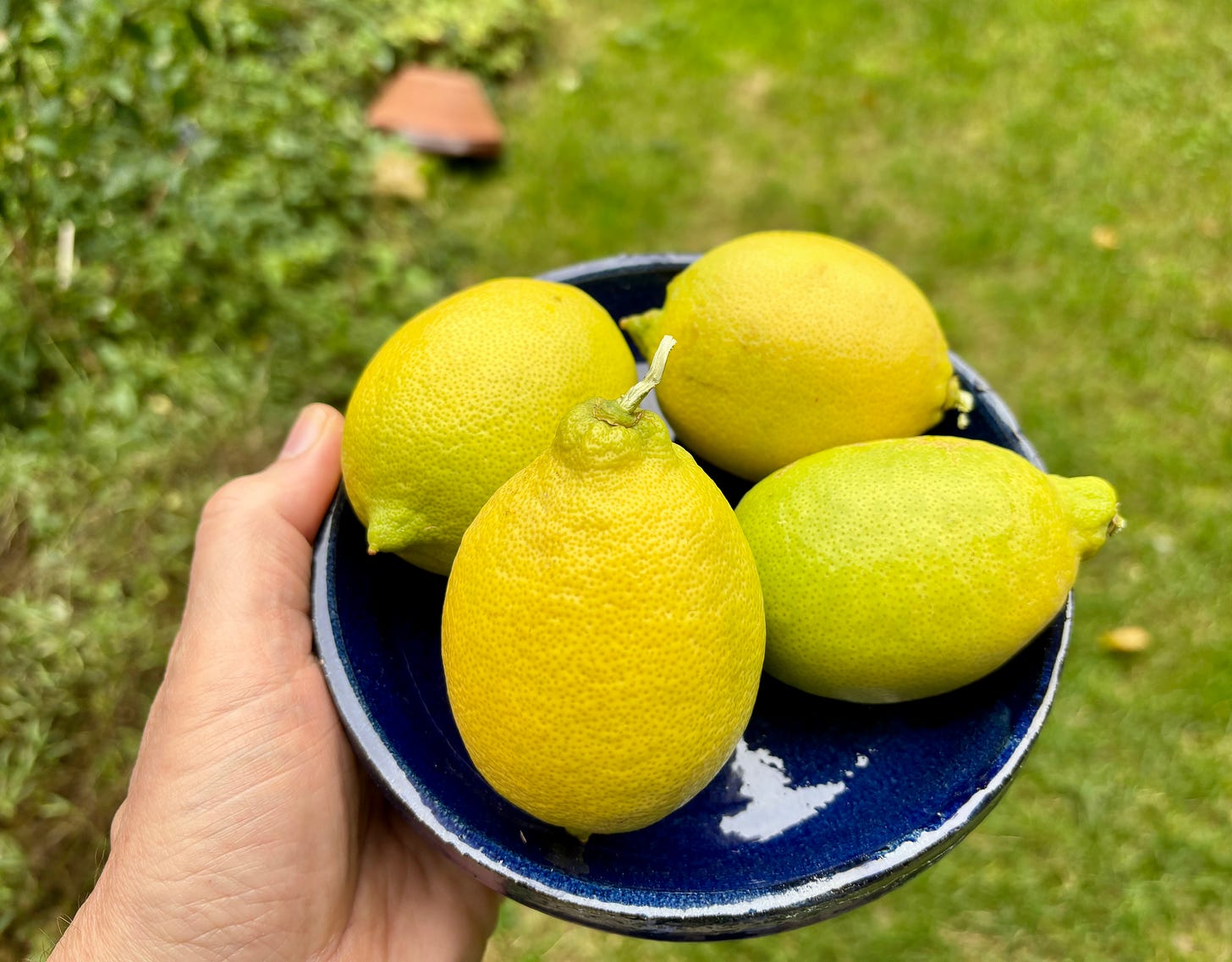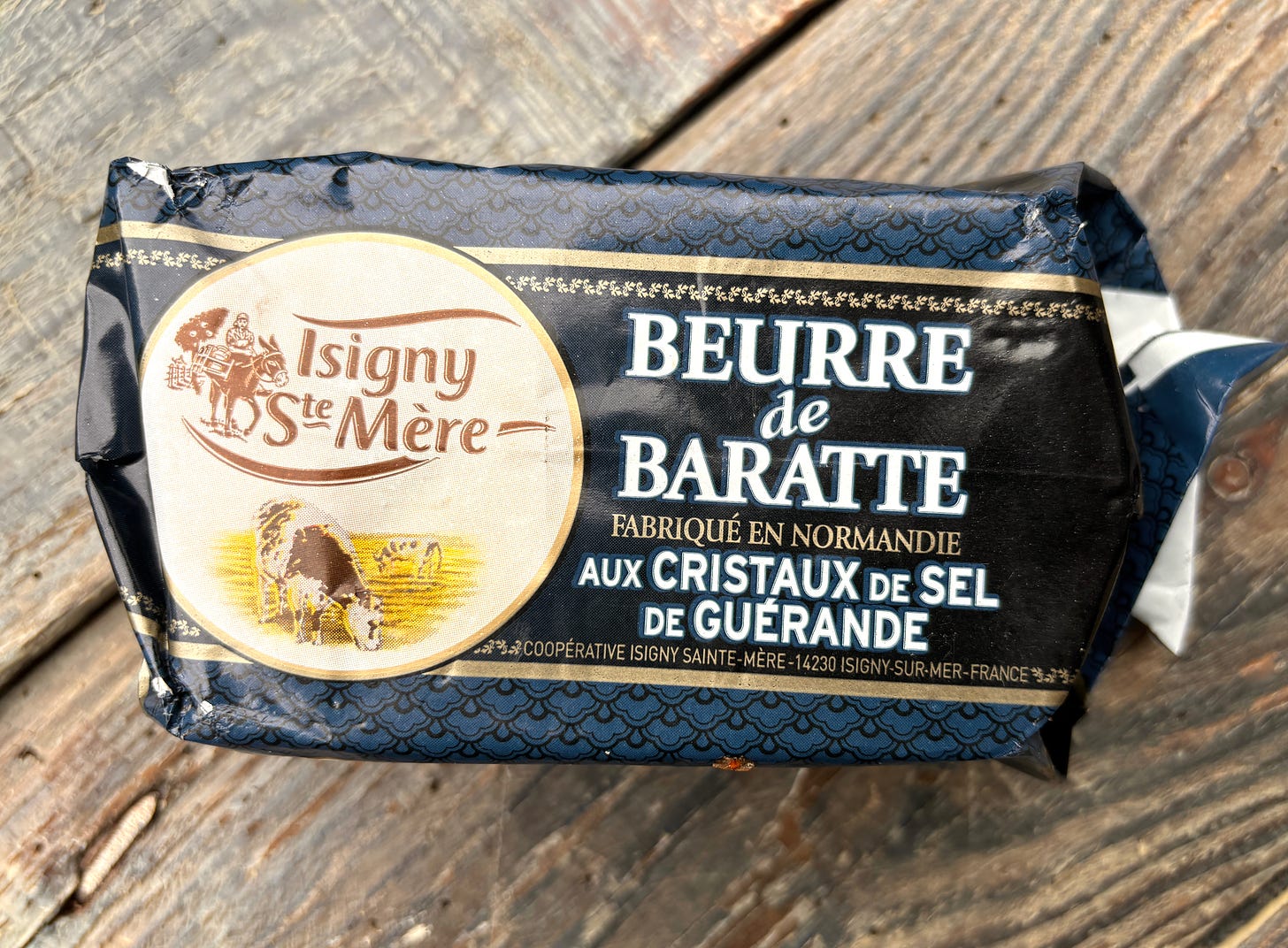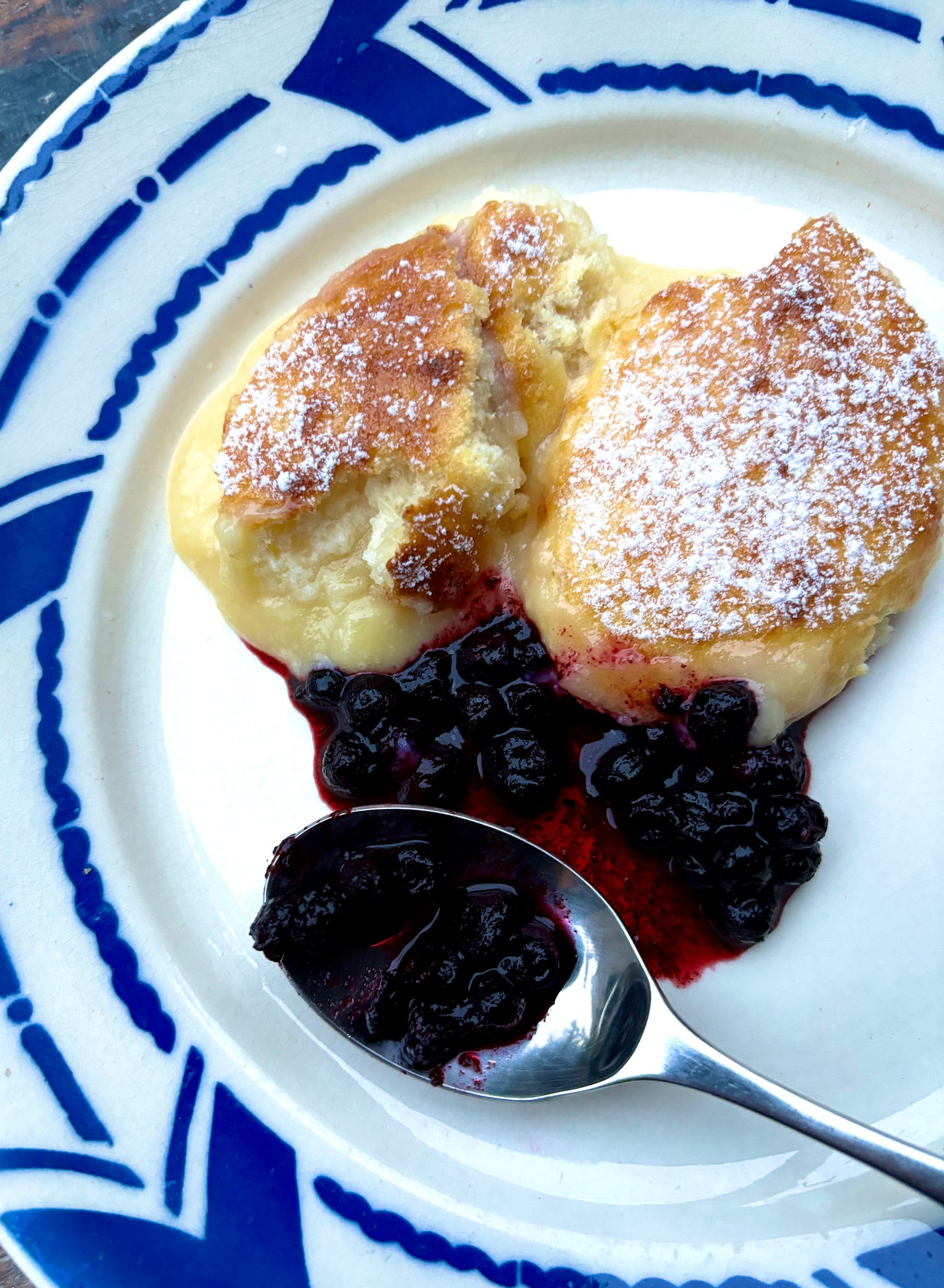When you move in Paris, you basically need to start everything all over again, at zéro, in terms of getting to know the local merchants, the vendors at the market, the servers in the restaurants, and most of all, the neighbors.
People are often wary of newcomers; Polly Platt in her seminal book, French or Foe, called it Stranger equals Danger—to be wary of newcomers. Paris, beginning from when it was a little island in the middle of the Seine, historically has been under attack from outsiders, hence the apprehension. There are a number of other reasons why you endure a bit of bizutage (hazing) when you arrive, and things were frosty at first in my previous building, but by the end, after twelve years, we’d made friends with quite a few of the neighbors.
One of our biggest concerns about moving was having to start all over, from zéro (again), but we were pleasantly surprised when most of the new neighbors were lovely.
One such neighbor, who lives upstairs, has a small lemon tree on her balcony, and she recently surprised me with four lemons from it. I asked how many lemons she had on her tree—enough so that she felt comfortable parting with four of them—and she said she had around a dozen, so I knew the lemons were extra special, and I knew just the right place to use them.
I had the Lemon Pudding recipe from Ballymaloe Desserts bookmarked for when I could harvest my own lemons (we have about a dozen on our tree, but ours aren’t ripe yet), so thanks to serendipity, warm Lemon Pudding was on the docket for dessert.
If you don’t know Ballymaloe, it’s a very, very special place in Ireland that’s a cooking school, country house, and restaurant. The first time I went, I was with a group to learn how Irish butter is made, along with exploring the gorgeous other foods from Ireland. Not to mention the super-nice people there.
We were sitting around the desk of Darina Allen, the force of nature who runs Ballymaloe, while little bushy chicklets scurried across her desk, moving so fast they were occasionally tripping over their own tiny feet. She looked at them, full of energy and brimming with new life, and said, “Oh, I know they shouldn’t be here. But they’re just so adorable…I can’t help it.”
She continued to talk with us about what Ballymaloe is, including how many gardens they have, what the cooking school is like, the classes they teach, and so forth. Suddenly, she stopped talking mid-sentence: “You know. Let’s get out of here. Let’s go outside. That’s where everything is!”
So we got a remarkable guided tour through their 400-acre organic garden with rows of raspberries and boysenberries with abundant herbs growing everywhere. There were gooseberries and currants, quince and plum trees, and almonds, which Ballymaloe pastry chef JR Ryall, the author of Ballymaloe Desserts, uses in his baking.
This very delicious Lemon Pudding embodies his philosophy of dessert, which is to use the freshest of ingredients and not do too much to them, so they can shine. The picture of this dessert in the book looked pretty, but a little sedate, so I was surprised by the explosion of tangy lemon flavor when I tasted my first spoonful. I was also surprised at how hot it was coming out of the oven (…ouch!), so I recommend letting it cool a few minutes before digging in. But once it’s cool enough to eat, you’ll find it hard to stop.
Warm Lemon Pudding
Four servings
Adapted from Ballymaloe Desserts: Iconic Recipes & Stories from Ireland by JR Ryall
I veered slightly from the original recipe, which says to use U.S. extra-large eggs, but I used what are considered large eggs in France—60g/2 ounces (weighed in their shell)—and it came out just fine. More on egg weights and their differences here. I also dialed down the sweetness because I like very tart lemon desserts.
This is a pretty forgiving recipe, and while I haven’t tested it with gluten-free flour or corn or potato starch, I’m sure it would work with any of them. Generally, you want to use half the amount of corn or potato starch when using it to replace flour. If you do try it, let us know in the comments what you used. If you don’t have salted butter, just add a pinch of salt to the butter and sugar at the beginning of the recipe.
Lastly, you don’t need an electric mixer to make this, but you’re welcome to use one. If making it by hand and you only have one whisk, clean it (and dry it) extremely well between uses as any trace of fat in the egg whites will prevent them from whipping properly.
3/4 cup (150g), plus 2 tablespoons (30g) of sugar
1 tablespoon (15g) salted butter, at room temperature
2 lemons, for the zest and to get 1/2 cup (125ml) freshly squeezed lemon juice (depending on the size of your lemons, you may need an extra lemon to get enough juice)
3 large or extra-large eggs, separated (put the egg whites in a medium-size metal or glass mixing bowl)
1 cup (250ml) whole milk
3 tablespoons (30g) all-purpose flour
Powdered sugar, for finishing
Preheat the oven to 350ºF (180ºC). Have a baking dish or ovenproof pie plate with a 5 cup (1,2L) capacity ready.
Put the 3/4 cup (150g) of sugar and the butter in a medium-size metal bowl. Zest the 2 lemons right into the bowl. Use a flexible silicone spatula or a spoon to break up and mash in the butter so it’s evenly dispersed in the sugar and there are no large visible pieces of butter; it’ll look like damp sand.
Whisk in half the milk, then whisk in the egg yolks and the flour, then the lemon juice. Finally, whisk in the rest of the milk.
Whisk the egg whites that are in the metal or glass bowl until they form soft peaks. Continue whipping while sprinkling in the remaining 2 tablespoons of sugar, whipping until the mixture forms stiff, but still glossy (not dry), peaks.
Scrape the egg whites over the lemon base, then fold in the whites with a spatula just until they’re incorporated. The mixture will still be quite liquidy.
Pour the mixture into the baking dish and bake for 35-40 minutes, until the pudding feels set in the middle.
Remove from the oven and let cool at least 5 to 10 minutes before serving. It’s very hot right out of the oven, so let it sit a little before digging in.
Sprinkle with powdered sugar and serve.
Serving: I served this with wild blueberries (that were frozen), which I cooked with a sprinkle of sugar and a little squeeze of lemon juice in a small covered saucepan until the berries were warmed through and the juices were syrupy. If you cook them a day or two in advance, the juices will thicken even further.
JR likes to serve it with whipped cream, which I didn’t do, but it would be delicious with that, or with berries tossed in sugar, in the summer. A scoop of berry or blackcurrant sorbet would be another excellent accompaniment.
While the pudding is good warm, we enjoyed leftovers at room temperature.
This post is for all subscribers. Thanks for subscribing.














This is what is called a Lemon Delicious Pudding in Australia (possibly also the UK), and is a very old favourite our nannas used to make.
Hi, David. I'm at my aunt's in Sacramento. She has three lemon trees! We just moved her to assisted living, so I'm going to make her your pudding and take it tomorrow. Thanks! Constance